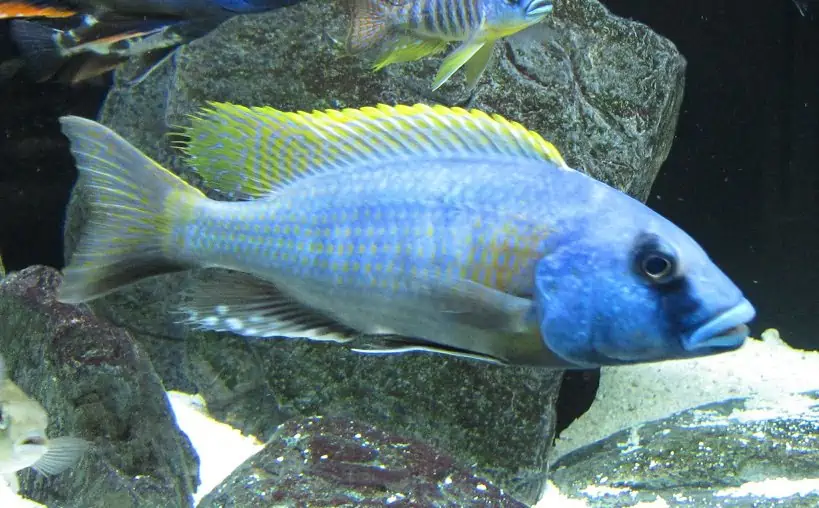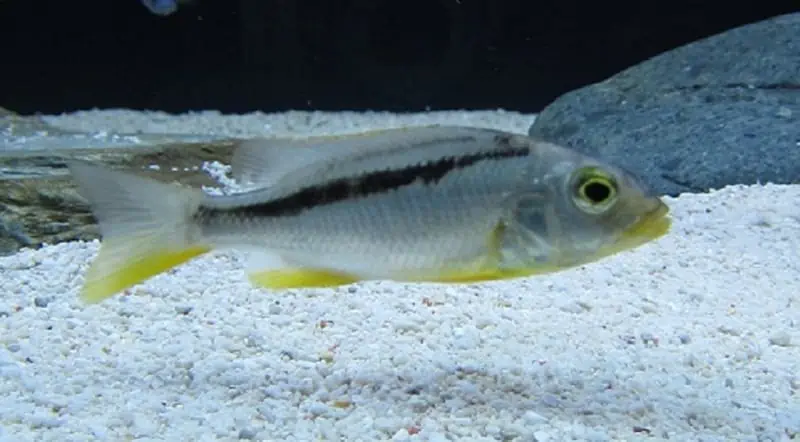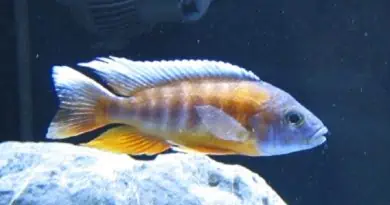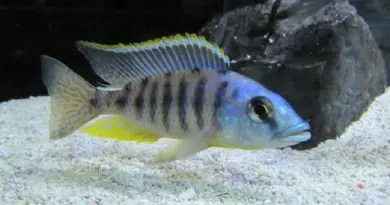How To Make African Cichlids Grow Faster
Getting your fish to grow faster is one of the questions most frequently asked by African cichlid keepers. While size and growth rate are primarily determined by genetics and species type, there are some things we can do as fish keepers to speed up the growth process.
A large tank, frequent water changes, increasing water temperature and a high-quality diet are the keys to making your African cichlids grow faster.
Most fish bought from fish shops are juveniles and it can take what seems like forever for them to reach adult size. In this article, we’ll discuss the methods which can be used to increase the growth rate of our cichlids and have them reach adult size in the shortest time possible.
As mentioned earlier, the best way to get your fish to grow fast is by keeping them in the biggest tank possible, performing large frequent water changes, increasing the water temperature and feeding them a high-quality food. Fish usually grow faster during the fry and juvenile stage; however, it is common for sub-adult African cichlids to have a growth spurt during their development.
Something to keep in mind is the growing out of fry. There can be a substantial difference in size between the largest and the smallest fry from the same batch. Although all of the fry are reared in exactly the same conditions and feeding schedule, some fry will grow fast while others seem to grow extremely slowly. Likewise in any tank, there will be some fish growing well while others lag behind.

A Large Tank Increases Fish Growth Rate
The first thing we need to look at to improve our cichlid growth rate is aquarium size. Fish grow faster in a large tank and you should aim to put your fish in as big a tank as possible. Most commercial breeders and fish farms grow their young fish in vats or ponds for this very reason, as they need their fish to reach a sellable size in the shortest time possible.
Why do fish grow faster in a larger tank? This may be due to several reasons such as the bigger tank having better water quality due to the larger water volume they contain. Additionally, there are various fish species that produce growth-inhibiting hormones to stop the fish from outgrowing its environment. The large water volume helps to dissolve these hormones and they don’t reach a level high enough to impact fish growth.
Keeping fish in too small of a tank for an extended period can stunt their growth, meaning their growth rate is way below average for their species at that age. Stunting is something you will want to avoid as in most cases it permanently damages the fish’s development.
Frequent Large Water Changes
Next on the list is frequent large water changes. This is needed to reduce nitrates. High nitrate levels are known to negatively impact the growth rate and immune system of fish. Additionally, water changes help to remove the growth-inhibiting hormones mentioned earlier from the aquarium, allowing your fish to grow at a faster rate.
On my 50 gallon grow-out tanks I perform a 50% water change twice a week and my 180 gallon gets a 50% weekly change since the fish are already quite large. I believe this is sufficient to keep the water quality up without overdoing it on the maintenance workload. There is a point where the return in growth gate will not be worth the additional effort.
Higher Water Temperature Increases Growth Rate
The temperature at which your fish are kept can also affect the growth rate. The temperature range for African cichlids is between 78 and 82 degrees Fahrenheit (23-28 Celsius). Keeping your tank water temperature on the higher end of this range can increase metabolism and growth rate. However, African cichlids are known to be more aggressive at these higher temperatures.
Frequent Feedings of High Quality Food
When it comes to feeding the best approach is to have frequent feedings instead of one big daily feeding. Split the same amount of food you would feed daily into two or three feedings.
Overfeeding, also known in the hobby as power feeding or pumping should be avoided. This is the practice of feeding your fish as much food as physically possible a few times a day. It can cause serious health issues, including bloating. Not to mention the impact it can have on water quality due to the amount of waste produced. Overfed fish can also develop a very un-naturally rounded body shape.
Check out my article on what to feed African cichlids for more detailed info on this topic.
Bonus tip – Avoid Overstocking Your Tank
Overstocking a tank increases the competition for food, produces additional fish waste which decreases water quality and increases stress on the fish, all of which can have a negative impact on their growth rate.

Does Growth Rate Impact Color Development?
Growth rate and fish coloring up don’t always go hand in hand. It does work out well most of the time as the largest fish is usually more dominant and colorful due to its position in the hierarchy of the tank. However, some fish seem to put all the effort towards growth at the expense of color development. I would not be worried if the fish is growing well but not coloring up yet, so long as the fish is a male the color will come good eventually.
The Growth Rate v Lifespan Trade-off
Something I learned recently is that faster growth rate can result in a shorter lifespan of the fish. Alternately, a slower growth rate can lead to a longer lifespan.
Here is an article, Experimental demonstration of the growth rate–lifespan trade-off if you want to explore this further. It mentions that as compared to the control group, faster growth led to a reduction in lifespan of 14.5%, while slowed-down growth extended lifespan by 30.6%. Interestingly, water temperature was the factor used to control the growth rate of the fish involved in the experiment.
Conclusion
Growing out African cichlids takes time. It is possible to speed up the process but it requires additional work on your part maintaining high water quality and keeping the fish well fed. Having your water temperature on the higher end of the range for African cichlids will help.
My advice is to keep the additional workload to a manageable level. Unless you really enjoy doing water changes, it may not be worth your while putting in 600% additional effort doing daily water changes on your tanks if the overall return will be a 15% increase in fish growth rate.
The fishkeeping hobby requires plenty of patience and growing out fish is a slow process. It will take months rather than days or weeks to grow a juvenile African cichlid out to adult size. Learn to enjoy your fish at each stage of their development rather than always chasing the end result.
Thanks for reading. If you found this article helpful, don’t forget to share 🙂



